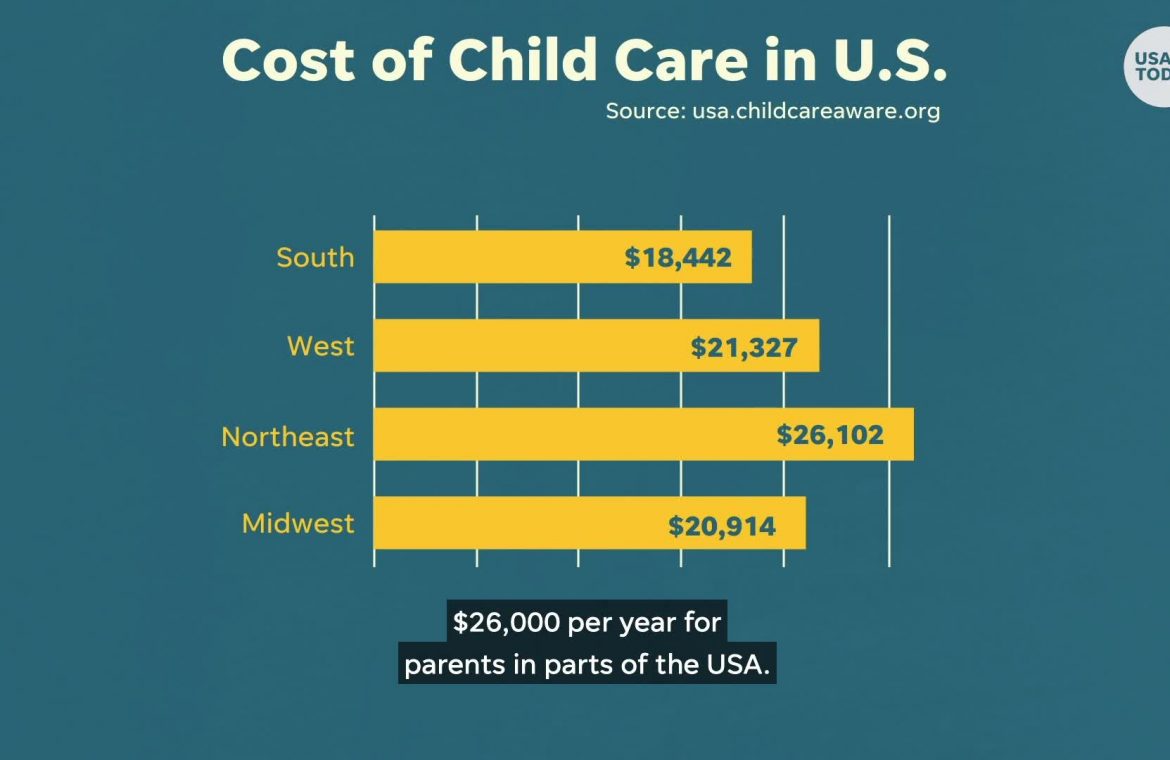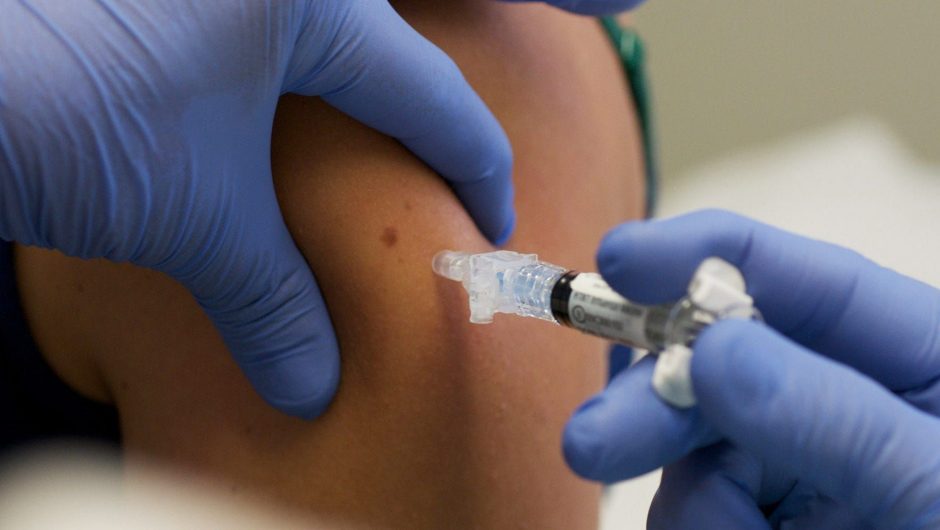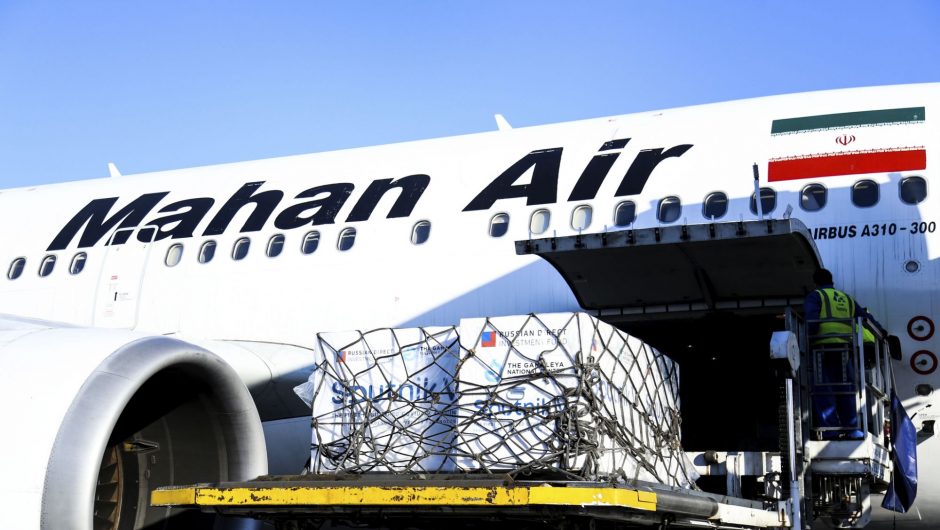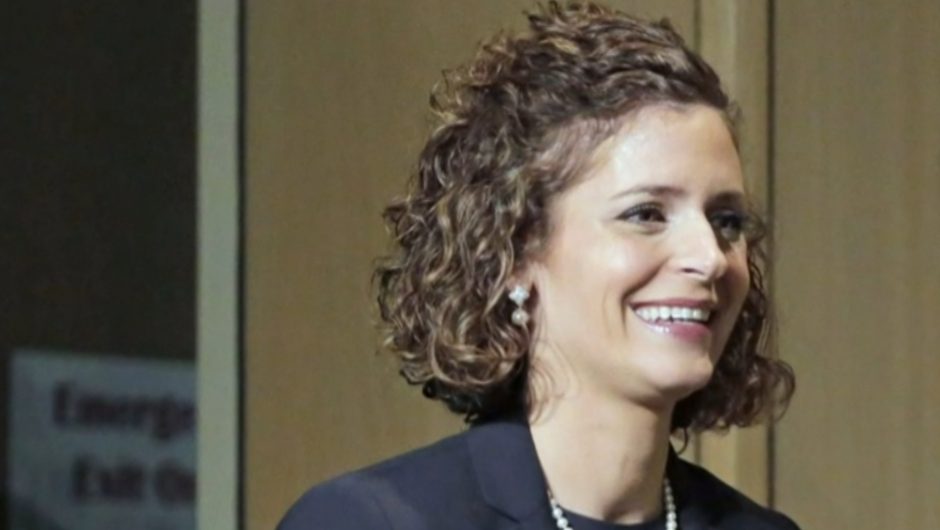For the hundreds of thousands of low-income parents who rely on subsidized preschool services, those programs do much more than care for and educate their children. They provide nutritious meals and health screenings, resources to support housing stability and financial security.
Which, advocates argue, attests to the critical role such programs play in the COVID-19 vaccine rollout – and why early-childhood workers should be given priority for the shots.
“Child care providers have really been on the frontlines throughout the entire pandemic,” said Lauren Hogan, of the National Association for the Education of Young Children. “They have been putting their own lives and livelihoods on the line since March to care for children and to make sure that families have a safe place to send their kids.”
Infection rates are, according to one study, highest among Native, Black and Latino early-childhood workers, though it’s unclear whether they contracted the virus in child care settings. Women of color, who are overrepresented in that workforce, are more likely to get COVID-19 than their white counterparts.
Yet some states haven’t grouped early-childhood workers with other teachers on their lists of who gets precedence for vaccination. Even in places that have technically included such workers in one of the first vaccination phases, confusion remains over how and where to make that happen.
Complicating matters further: A good degree of skepticism among early-childhood educators about the vaccine, which could have significant implications for the broader community.
Vaccine skepticism among Blacks, Latinos: Women of color can help swing the momentum about COVID-19 vaccines
Preschool and child care providers are often low-income parents’ “most trusted sources of accurate information about how to best support and protect our children,” said Adrián Pedroza, the national director of strategic partnerships for Abriendo Puertas/Opening Doors, a nonprofit that works with Latino parents in more than three dozen states to foster children’s learning and development.
Story continues
If early-childhood workers are struggling to understand and gain access to the vaccine, there’s a good chance the families they serve are, too.
“A teacher can have a lot of influence … especially in my community where a lot of the parents are low-income and don’t speak English,” said Joana Perez, a Latina mother of seven in Los Angeles. Three of her children would be enrolled in a local Head Start program but have been staying at home since last March.
“For these families, it’s really going to depend on the information that is handed to them,” Perez continued, noting many aren’t literate and thus don’t have the luxury of simply Googling for information. “It is going to be very important in areas like this one that the teachers lead by example.”
Research by the National Academy for State Healthy Policy shows that most states place K-12 educators in one of the first phases of their vaccine rollout. Some or all teachers are, according to an Education Week analysis, already eligible for the vaccine in roughly half of all states, Washington, D.C., and Puerto Rico.
Giving teachers priority, experts argue, will help to enable the reopening of K-12 schools critical and stymie spread of the virus. (The vaccine hasn’t yet been authorized for most minors.)
The stakes are just as high for educators who work with younger children.
As Hogan and others see it, early-childhood educators are essential workers in part because many parents who rely on that care are essential workers. That’s particularly true with programs such as those run through Head Start, which provides federal funding to preschool and child care providers that serve families living in poverty.
One recent survey last fall of families participating in Educare, a Head Start-affiliated national network of preschools, found that almost all of the roughly two-thirds of respondents who work are considered essential. By comparison, about 45% of working Americans nationally have jobs defined as essential by the federal government.
Child care providers also keep the economy running. Close to 12 million children under 5 typically rely on such providers for care. Yet in a survey published last summer, 86% of providers said the pandemic had taken a toll on their enrollment, with two in five respondents – including half of those that are minority-owned businesses – saying they were certain they’d have to close permanently absent financial relief.
The crisis has forced many parents, particularly mothers, to quit their jobs. Nearly 2.2 million women have left the workforce since the beginning of the pandemic.
Thanks to the coronavirus relief bill passed by Congress late last December, which set aside $10 billion for child care, many providers will manage to stay afloat for at least a few months. President Joe Biden has proposed another $40 billion to help child care providers and parents in his stimulus plan. But observers worry that the existing funding will only go so far in addressing the crisis, especially without a large-scale, dedicated effort to get early-childhood educators vaccinated.
Biden’s COVID relief plan: $15 minimum wage? More checks? Resistance could derail Biden’s relief plan
According to the research and advocacy organization Child Care Aware of America, five states and Washington, D.C., prioritize K-12 staff over early-childhood workers for the COVID-19 vaccine. Another four states have yet to clarify when the latter group can access it.
The Akron Beacon Journal, part of the USA TODAY Network, recently reported that many child care staff in Ohio, one of the states that’s given precedence to K-12 educators, are frustrated that their ineligibility for the vaccine will bar them from resuming in-person learning for the time being.
A spokeswoman for the Ohio Department of Health told the paper that while the state values the work of these “school-adjacent personnel,” it has sought to focus on the people “who are essential to having in-person learning.”
Even in states that have put the early-childhood workforce in one of the first vaccination phases, providers are at a loss for when their employees will actually get a shot, as access and information can vary significantly by locale.
Zoila Bravo, who founded and works at a Commerce, California, provider called Healthy Kids Happy Faces, said in Spanish that she’s eager to get vaccinated but hasn’t been able to yet, noting she and other child care workers in California don’t feel like “we’re a priority.”
Many early-childhood workers have had to rely on informal communication channels such as text messaging to figure out the details, said Dana Garner, who works with providers across Illinois as a program manager for IFF, a community-development organization in the Midwest.
The limited outreach may in part explain why so many early-childhood workers are uncertain about the vaccine.
In an informal survey conducted last December among Head Start staff in the Western U.S., 28% said they were at least somewhat uninformed about how the vaccine will stop the pandemic. Many shared that they were confused about the measures taken to ensure the vaccines are safe. Vaccine hesitancy was listed as a primary topic of interest for close to half of respondents.
The skepticism is valid, advocates say, particularly among communities of color. Garner, speaking as an African American woman and not on behalf of her role as a leader in this space, pointed to the Tuskegee Institute studies, which used Black people as scientific subjects for medical research.
“There is a fear factor, a tremendous fear factor,” Garner said. “One thing that we definitely know is that systemic racism is real.”
What is systemic racism?: Here’s what it means and how you can help dismantle it
The vast majority of child care workers are women, and more than 40% are Black, Asian, or Latino, according to federal data. Research published in 2018 by the University of California, Berkeley, shows the vast majority – 86% – of early-childhood educators who work with infants and toddlers in centers make less than $15 an hour.
“That’s where a lot of the parents are either concerned or wondering if, when their turn comes, they should [get vaccinated],” said Perez, who chairs the parent committee for her children’s early-childhood center. “Because if the teachers not doing it, parents might think this is an educated person, so maybe I shouldn’t be doing it myself.”
Early childhood education coverage at USA TODAY is made possible in part by a grant from Save the Children. Save the Children does not provide editorial input.
This article originally appeared on USA TODAY: COVID vaccines for preschool, daycare workers: Shot priority, fear








